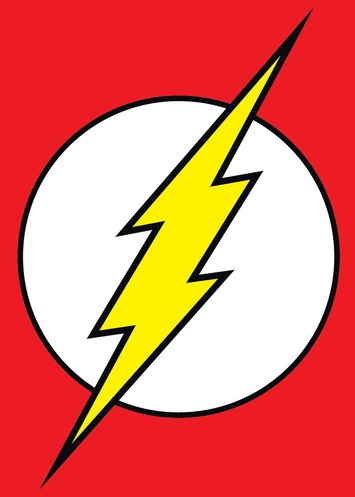Flash Farts: Paradoxes in the Fast Lane
FTC Statement: Reviewers are frequently provided by the publisher/production company with a copy of the material being reviewed.The opinions published are solely those of the respective reviewers and may not reflect the opinions of CriticalBlast.com or its management.
As an Amazon Associate, we earn from qualifying purchases. (This is a legal requirement, as apparently some sites advertise for Amazon for free. Yes, that's sarcasm.)

Doused in chemicals and struck by lightning, police scientist Barry Allen became the Fastest Man Alive: The Flash. He wasn't the first to use the name, and he wasn't the last. When he was exonerated in the killing of Professor Zoom, he relocated to the future to live with his (surprise, she wasn't dead!) wife, Iris. Shortly after, however, he came back during the Crisis and gave his life to save the multiverse.
But he was only merely dead -- he wasn't most sincerely dead. He'd gone into the "speed force" and has now been returned to physicality. As Barry Allen, he's resuming his job as a forensic scientist, having been away only a relative few years and using the story that he and his wife had been in witness protection.
Which, as cover stories go in the comic book world, would work great. But there are other potholes in the Flash's pavement that need some work in this new paradigm.
And yeah, I probably do have too much time on my hands to think about these things.
Welcome back, Mr. Allen. Who's the cougar?
It's not just Barry Allen who's back in Central City; his wife, Iris, has returned with him, and although she's technically been back for quite some time in Flash comics, her newest incarnation is now getting back to her old job as a reporter -- again, having only been away for what seemed a few years. The problem with this? She's been gone for quite a bit longer than that.
You see, when Flash and Iris sailed off into the sunset of the future, they shortly conceived twins -- Don and Dawn Allen. Before they were born, Barry was lost to the Speed Force. The next time we see Iris, she's coming back to the present to ask the new Flash, Wally West, to help save her grandson, Bart Allen -- the current Kid Flash.
Now, let's be as conservative as we can here: Let's say that Don Allen sowed some wild oats at the tender age of 15 and got Melani Thawne pregnant. Let's also say that Bart is currently 15. That's 30 years of history through which Iris Allen has been present. So when she arrives in the present with Bart, she's thirty years older than when she was last seen.
And yet, in Flash #1, she's once again the intrepid street reporter, the comely Lois Lane of Central City. Pretty spry for a grandma -- shouldn't people be mistaking her for her own mother? And why does she appear not just the same age as, but in fact younger than, her husband, Barry?
History Repeats
It's not like this is the first time this has happened. The Golden Age Flash, Jay Garrick, became the Flash during World War II. When he and the Justice Society of America got trapped in an otherworldly realm fighting a mock Ragnarok, he (and the other heroes) came out of the battle rejuvenated, younger than before. His wife, Joan, was now several physical years older than him (although Jay was far from being a spring chicken).
But Jay's virility today can be, at least partially, explained by another post-Crisis wrinkle: the forgotten city of Keystone. In a revision of DC canon to straighten things out (no, seriously!) after the Crisis, it was decided that, rather than dwelling on Earth-2, parallel to the regular DC Earth, the heroes of the WW2 era would all exist on the same Earth. Keystone City became a sister city to Central City, only nobody knew about it because the city had been vanished and put into stasis by three super-criminals -- the Fiddler, the Thinker and the Shade. It wasn't until after Barry took on the role of the Flash and discovered Keystone City (at the end of a bridge that went nowhere out of Central City, for reasons nobody could explain) that the city -- and everyone in it, including Jay Garrick -- was brought back into the present.
Now, several sources state that Keystone was placed into this suspended state in 1956 (because that's when the comics went under). Depending on exactly when Barry Allen became the Flash, the citizens of Keystone could have been frozen for decades, the side effect being that not only Jay Garrick be younger than he ought to be, but so would everyone else. Parents could be as old as their moved-away children. Lovers could be separated by years. And the technology disparity with the rest of the world would be a shock, particularly for an automobile manufacturing town like Keystone (as Johns describes it in Flash Secret Files and Origins).
Am I excited about the new Flash series? Oh yeah. Am I gonna keep buying it? You betcha.
Am I more confused than ever? Definitely. But, you know? I think that's maybe part of the fun.


